![[eBook] OLED Lighting for Automotive Solutions](https://www.oledworks.com/wp-content/uploads/2022/02/Automotive-eBook-Header-750x254.png)
OLED light sources are optimally suited for automotive applications. OLEDWorks (Aachen, Germany) has recognized the potentials of this application field
Originally published in OPE journal Issue #27
A car is not only a tool to drive you from one place to another. For most people, a car is also a statement, a symbol of freedom, a way to achieve personal independence. An expression of identity to differentiate yourself from other people. In the past, the design of a car body was the main feature of differentiation for automotive designers, but since the oil crisis in the 1980s combined with today’s ecological awareness, car makers have felt the need to reduce fuel consumption of their cars by improving aerodynamics. This aerodynamic focus led to more similarly looking cars to the point where differentiation through the car body was no longer possible. A different approach for the car industry was needed. The invention and development of solid-state lighting to replace light bulbs was a breakthrough that made differentiation by lighting possible. Today, light is a major part of the brand signature for every manufacturer and for each of their cars.
Designing with Light
Designing with light is now ubiquitous throughout the automotive industry. Almost everyone can recognise different car types and car generations by the front and rear lights. The exterior light expression creates the individual look of the car. The first implementations of this exterior lighting signature used light emitting diodes (LEDs) in tail lamps to differentiate and brand each car. Next, LEDs moved to the front, including daytime-running lights and headlights where the intrinsic high intensity point source nature of LEDs is an advantage. Although LEDs were first used in tail lamps, the point source nature of LEDs constrained the designer to produce tail lamps that were inherently non-uniform; initially uniformity was not required, so this was acceptable. The recent shift in focus for tail lamps to uniform, homogeneous surface illumination is not well suited to usage of LEDs. Optical methods required to spread and diffuse the LED point sources adds depth, reduces energy efficiency, and blurs individual segments of the tail lamps into indistinct fuzzy zones and yet still fails to produce a truly uniform and homogeneous surface light. A new lighting technology is needed to enable design possibilities that are more elegant and brand powerful. The ideal light source for tail lamps would be thin, uniform and highly efficient while also being able to be segmented for dynamic lighting with sharp, well-defined, high contrast edges, enabling a communication function more akin to displays than traditional tail light solutions. Organic light emitting diodes (“OLEDs”) manufactured by OLEDWorks are this ideal light source (see Figure 1).

Figure 1: OLED light source with mirror-finish in on-state
The company’s OLED lighting panels are surface light sources that expand today’s opportunities and offer completely new possibilities for car designers. In the off-state its OLEDs can have a mirror-finish look which creates an elegant modern finished surface. The innate homogeneity of this light in the on-state creates a very sharp edge with no hot spots or glare for the person behind to endure. This sharp edge allows a crisp design and segmentation for dynamic applications such as welcome and farewell sequencing or turn indicators. The sharp, well-defined, high contrast edges of the light also facilitate imbedded branding in the lit regions where a logo or other image can be lit against an unlit background or a silhouette of a logo or image can be surrounded by a lit background. All these characteristics are available with OLEDWorks’ rigid OLED panels made on 0.5-0.7mm glass substrates resulting in an unrivalled lightweight source that is less than 1mm thick. In 2018 OLEDWorks launched its first bendable OLED panel, the LumiCurve Wave, made on 0.1mm flexible glass substrates (see Figure 2). Bendable OLED enables three-dimensional lighting designs while maintaining the uniformity, quality off-state finish and segmentation capabilities that position OLED for novel automotive exterior and interior lighting.
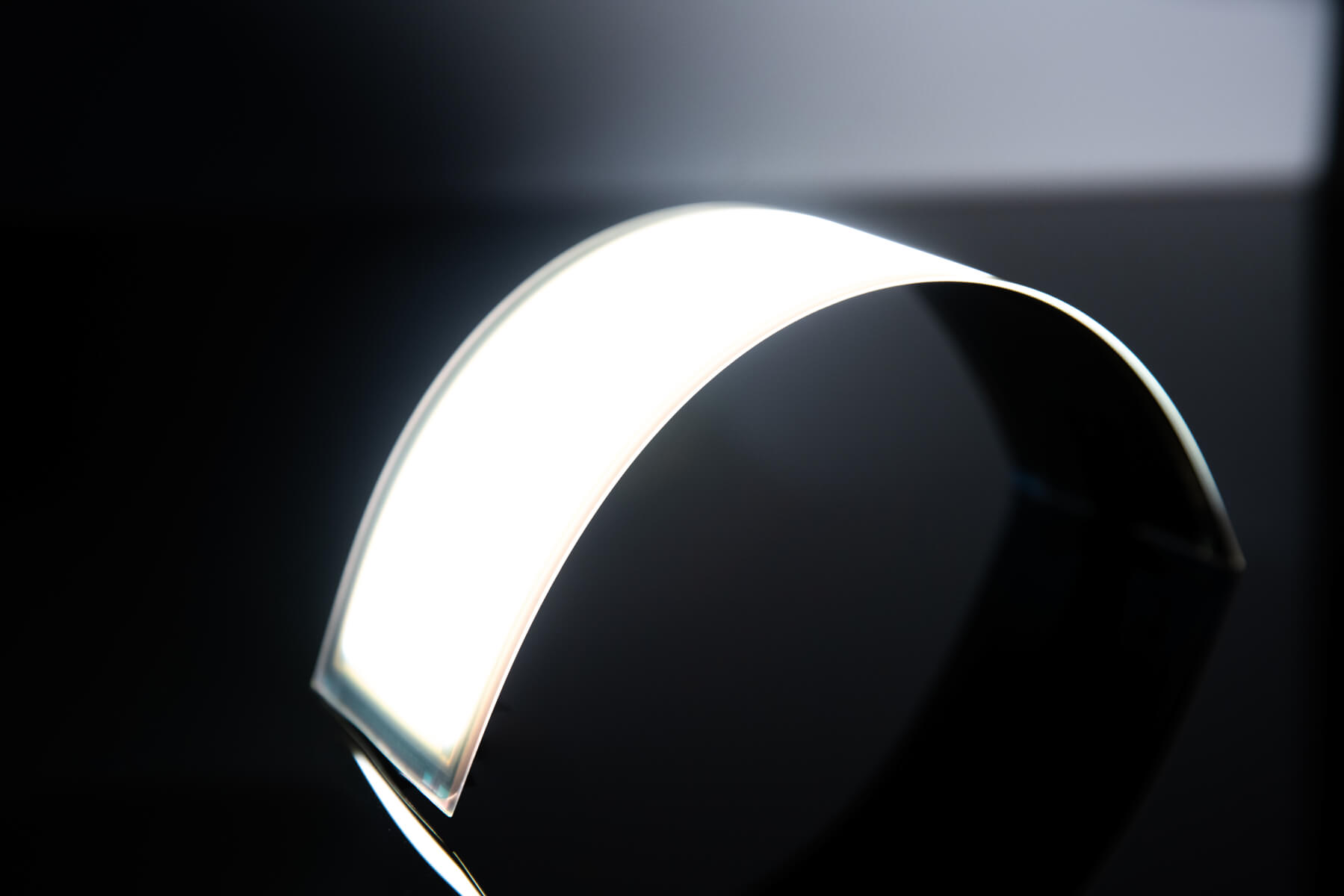
Figure 2: Flexible OLED lighting panel
Ecological and Economical Advantages
Besides the above-mentioned design features, our OLED light sources provide additional fundamental advantages regarding ecological and economical aspects. Because OLEDs are only warm to the touch, no additional components to regulate the heat are needed. The thinness of the OLED also reduces the installation space; therefore, the interior space can be utilised more efficiently. Both features make it possible that the whole lighting system is easy to integrate during the design phase and in production. Fewer components and less installation space lead to less weight of the whole car which helps reduce fuel consumption. Audi has also compared a 0.8mm thick OLED lighting panel to an 18mm thick LED light-in-a-box source that uses a 3mm diffusing film (see Table 1), and even at that thickness and diffusing level the LED light source is still significantly less uniform than the OLED light source and consumes 50% more power than the OLED light source.(1)
| LED/DF23 3mm | OLED 0,8 mm | |
| “Rel. Power consumption” |
150% |
100% |
| “Uniformity (Munsell)” | ~60% | >85% |
| “Uniformity (Linear)” | ~25% | ~85% |
Table 1: LED vs OLED power consumption and uniformity
OLED, therefore, not only provides a uniquely versatile design function, but it is also an environmentally friendly light source for the automotive industry. The use of OLED lighting technology along the value chain will help reduce the consumption of natural resources. Since 2016 Audi, BMW and Daimler have all introduced cars with OLED tail lamps (see Figure 3). The reliability of OLED light sources for automotive applications has been proven through these successful implementations and through extensive testing. Lifetime testing of OLED lighting panels at temperatures from -40°C to +85°C, storage testing from -40°C to 105°C and high temperature and humidity testing at 85°C and 85% relative humidity are just some of the tests required to demonstrate that OLED light sources meet the mission profile. OLEDWorks has demonstrated rigid glass red OLED tail position light sources that meet all the automotive reliability testing requirements required for exterior automotive applications. These results, along with the high temperature luminance, colour and voltage lifetime maintenance test results shown in Figure 4, demonstrate that OLEDWorks’ red rigid glass OLED light sources are engineered and manufactured to meet the challenging demands for exterior automotive lighting while offering additional features over LED tail lamp applications.
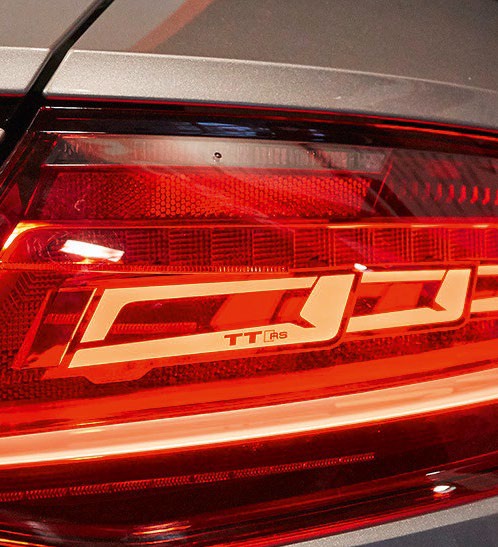
Figure 3: OLED tail lights
Tail Lamp Revolution
The deep red (CIEx 0.7, CIEy 0.3), low brightness (2,000 cd/m2), red rigid glass OLED lighting panels for replacement of LEDs for the tail position function are just the first step in the tail lamp revolution. One of OLEDWorks’ singular capabilities is claimed to be its ability and expertise in making high brightness, high lifetime, high reliability lighting panels for the general lighting market. Its Brite 3 family of white lighting panels are considered to be the highest brightness (up to 8500cd/m2), highest lifetime (100,000 hr at 3000cd/m2), highest efficiency (85lm/W at 3000cd/m2), most reliable OLED lighting panels in the world. Utilizing this expertise along with its unique bendable glass OLED lighting panel technology, OLEDWorks plans to expand OLED light sources into bendable and rigid panels for red tail position, red stop function, red and amber (SAE compliant) turn function and interior high CRI, low glare white lighting. Differentiation by light signature is well established in the automotive industry. OLED has been proven to meet both the design vision and the performance needs of the leaders in the market. Applications where OLED is clearly superior to LED will continue to expand as OLED performance and unique form factors provide designs that cannot be done with any other light source.
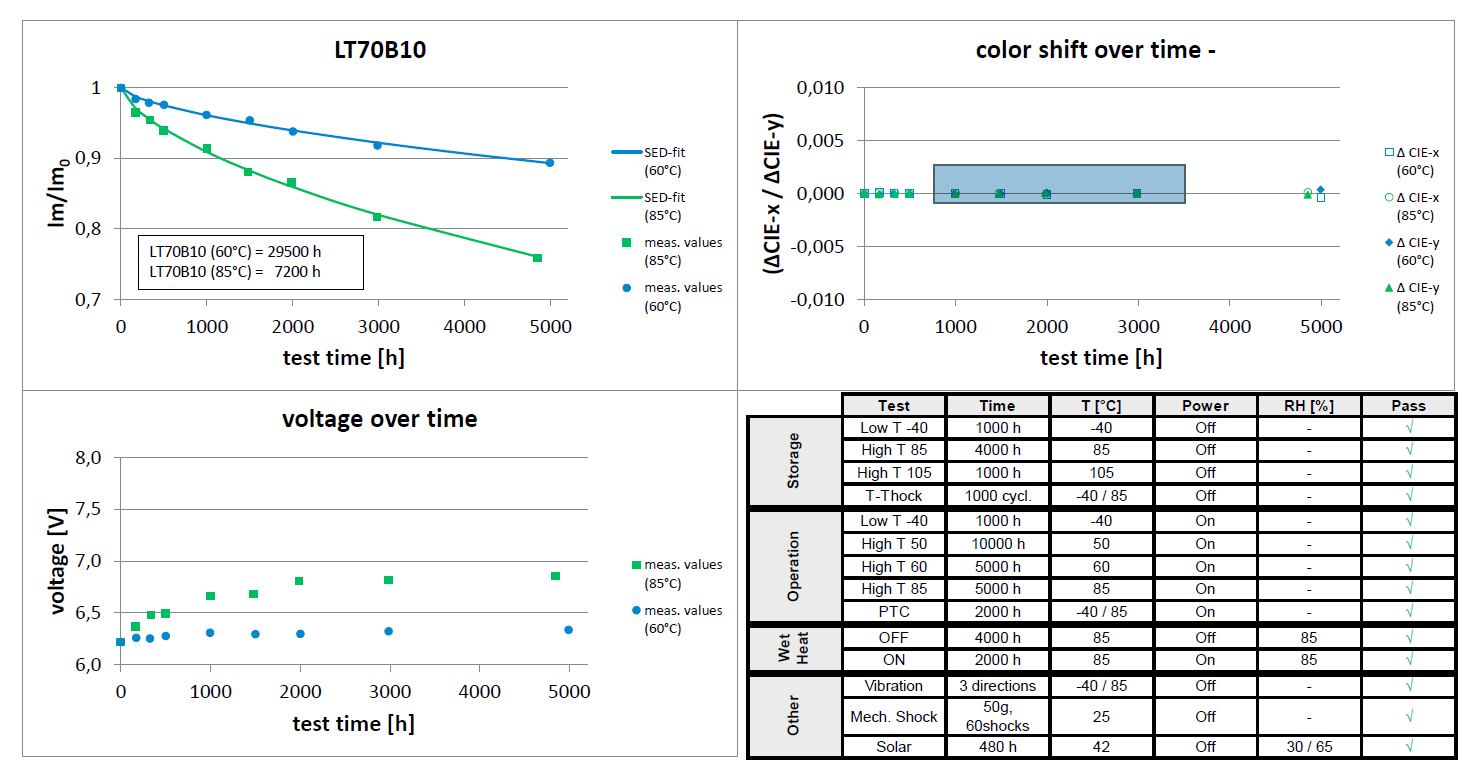
Figure 4: Luminance, colour and voltage maintenance over time at 60°C and 85°C
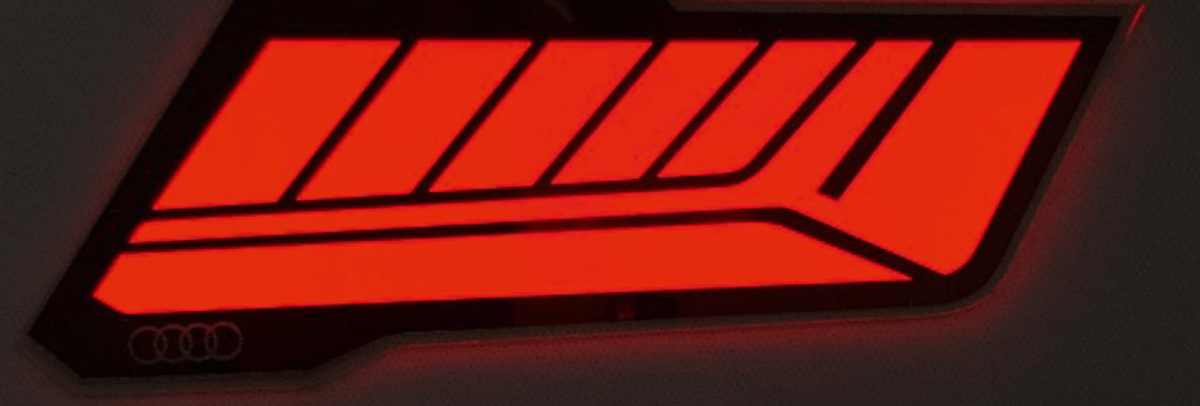
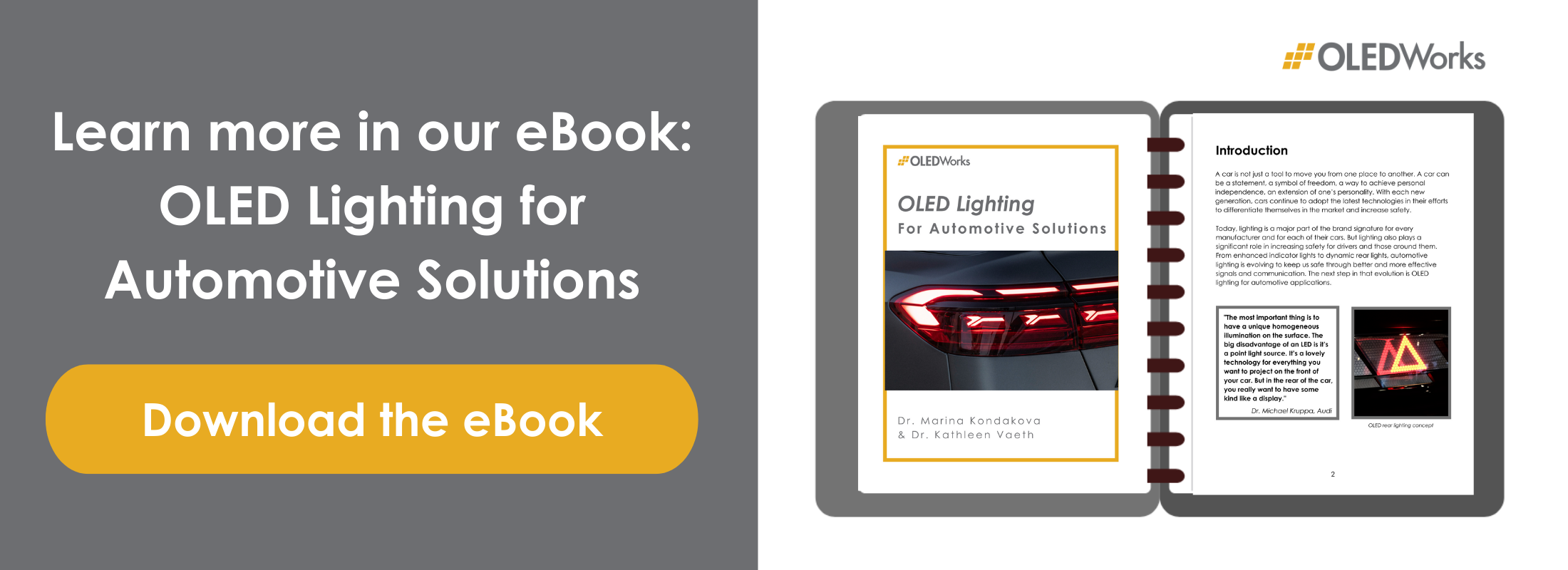
![[On-Demand Webinar] Why OLED for Automotive Lighting: The OEM and Tier 1 Supplier Perspectives](https://www.oledworks.com/wp-content/uploads/2022/03/MicrosoftTeams-image-15-750x254.png)
![The Exciting Future of Automotive OLED Technology – What’s Next? [Video Interview]](https://www.oledworks.com/wp-content/uploads/2022/07/ISAL-Interview-Future-Header-750x254.png)